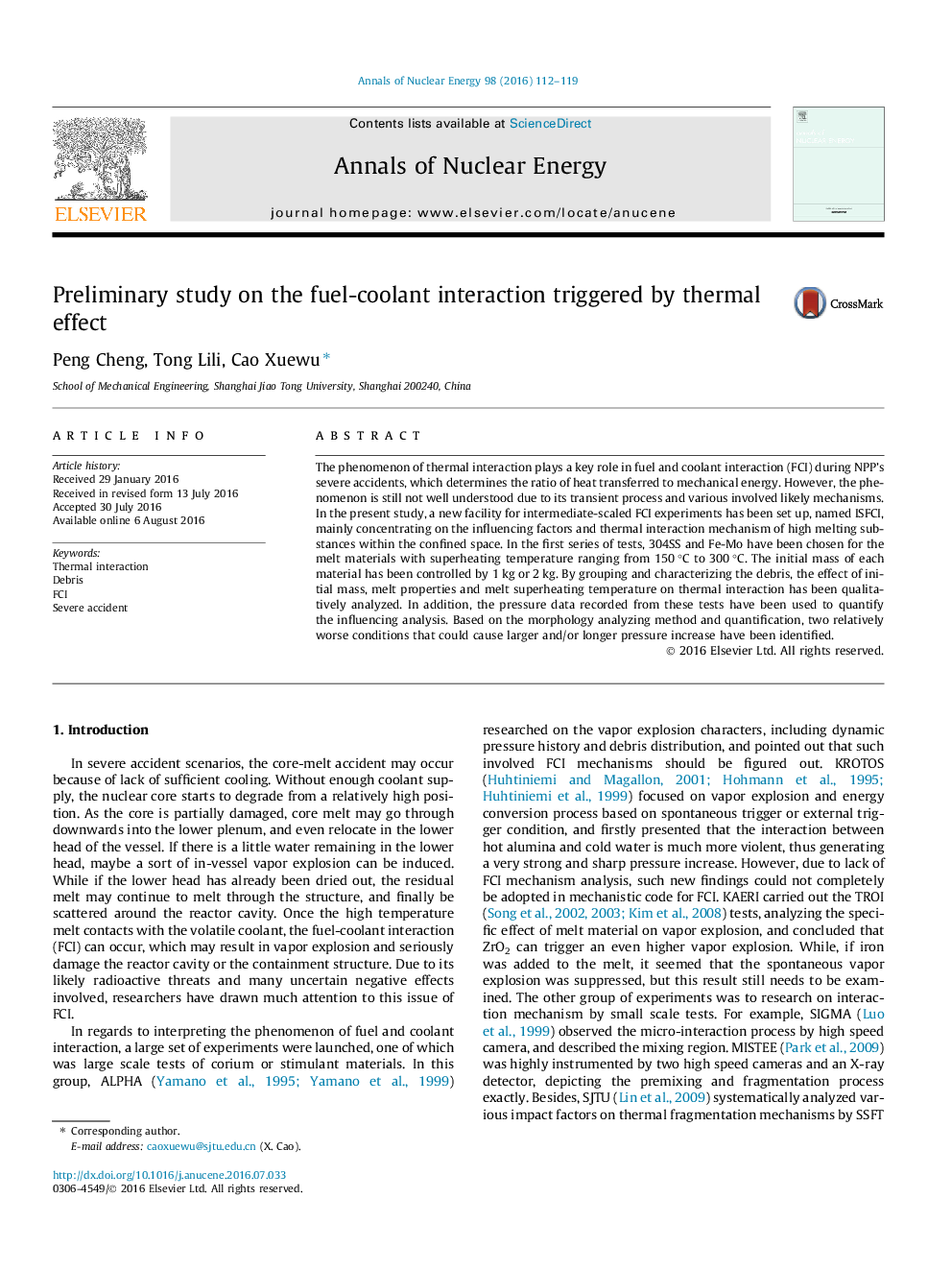| Article ID | Journal | Published Year | Pages | File Type |
|---|---|---|---|---|
| 1727840 | Annals of Nuclear Energy | 2016 | 8 Pages |
•The main influcing factors on thermal interaction have been qualitatively analyzed.•The pressure data have been used to supplement the influencing analysis.•Two relatively worse conditions have been identified.
The phenomenon of thermal interaction plays a key role in fuel and coolant interaction (FCI) during NPP’s severe accidents, which determines the ratio of heat transferred to mechanical energy. However, the phenomenon is still not well understood due to its transient process and various involved likely mechanisms. In the present study, a new facility for intermediate-scaled FCI experiments has been set up, named ISFCI, mainly concentrating on the influencing factors and thermal interaction mechanism of high melting substances within the confined space. In the first series of tests, 304SS and Fe-Mo have been chosen for the melt materials with superheating temperature ranging from 150 °C to 300 °C. The initial mass of each material has been controlled by 1 kg or 2 kg. By grouping and characterizing the debris, the effect of initial mass, melt properties and melt superheating temperature on thermal interaction has been qualitatively analyzed. In addition, the pressure data recorded from these tests have been used to quantify the influencing analysis. Based on the morphology analyzing method and quantification, two relatively worse conditions that could cause larger and/or longer pressure increase have been identified.
